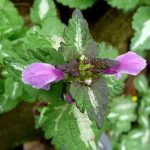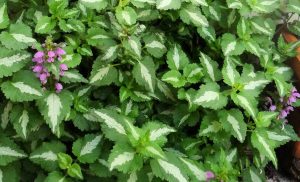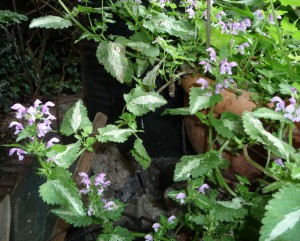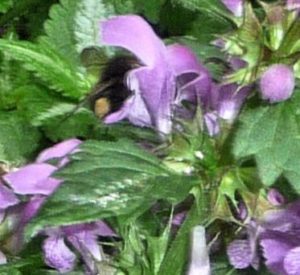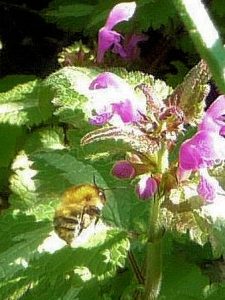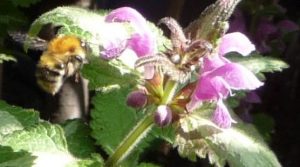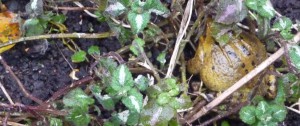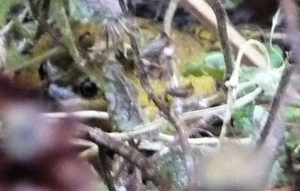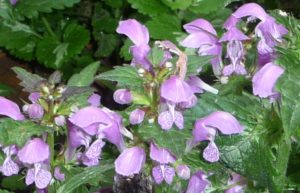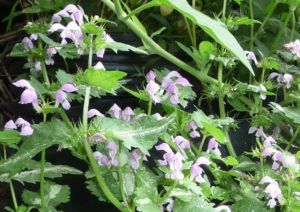LAMIUM MACULATUM (Spotted deadnettle)
Europe & N Africa to W Asia
The silver-striped, evergreen leaves of Lamium maculatum persist through winter in our London garden. This is the first plant to come into bloom in spring, putting out sprays of small LAVENDER flowers that look like miniature orchids.
Untroubled by pests or diseases, this perennial groundcover likes moist conditions & does well in clay soil. Part sun & shade suit it. It grows by seeds, roots & stolons, & can be invasive.
Best not placed near smaller plants, (Ivy-leaved Toadflax or Mind Your Own Business here) as it may overwhelm them.
.
Bees’ Favourite.
Bees nestle under the flowers’ hoods month after month. Blooms of Lamium maculatum are still on offer for late-flying bees as the next winter closes in. April to November is its given flowering time, but our London garden has had Lamium blooms in December & even January.
Other names: Devil’s Clover, Devil’s Nettle, Double Tongue, Purple Dragon, St Vincent’s Nettle, Spotted Deadnettle, Spotted Henbit, Variegated Deadnettle.
A sizable clump of Lamium went back with Brenda and Drew to their new garden, with some Highbury worms. Lamium and worms reported doing well.

